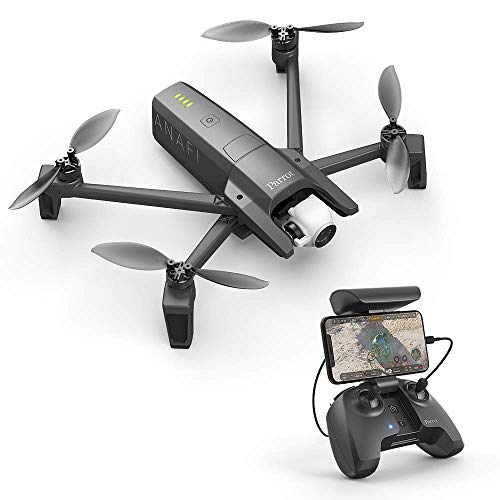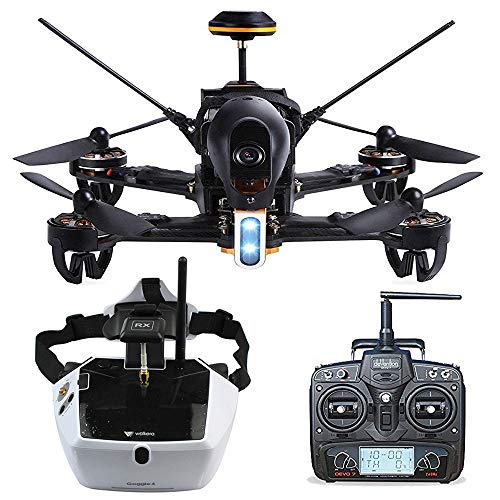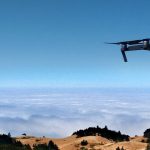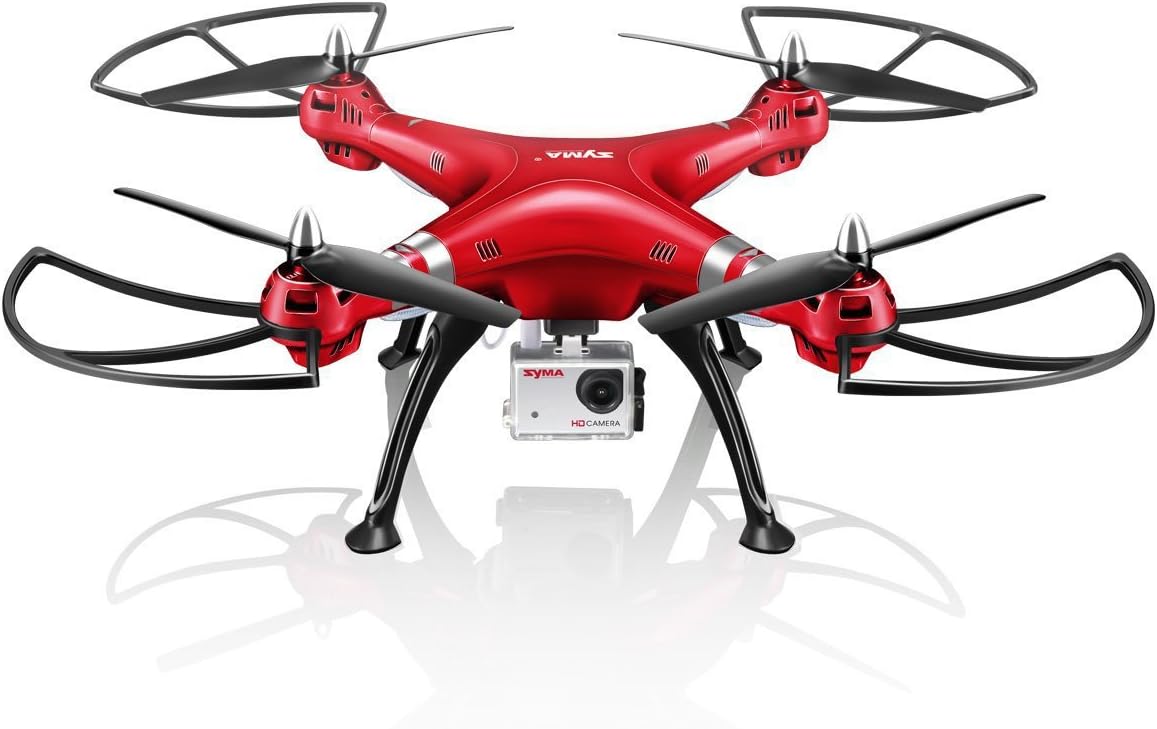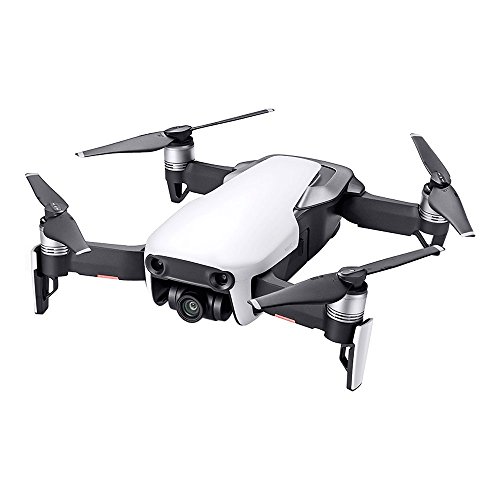Best Selfie Drones

In the pursuit of the best selfie drone, thorough research led to the selection of the ZeroTech Dobby. Recognized for its user-friendly camera controls and overall ease of use, the ZeroTech Dobby emerges as the top choice. Explore further details and discover the top 5 picks in the comprehensive guide below.
The Best Selfie Drones for 2024:
Best Selfie Drone: ZeroTech Dobby
- Pocket-size rechargeable drone with dual...
- Traditional one-button take-off and...
- Easily control with your phone’s swipe...
- Innovative camera offers facial...
- Dimensions: With propellers in – 135mm...
If you need the best drone for selfies and amazing profile picture taking, the ZeroTech Dobby is what you are looking for. It includes a tracking technology where the drone can follow you wherever you go. While a controller is absent, you can always rely on the mobile app (which is free), letting you take those amazing aerial shots with just a tap of a button. The 8MP camera can capture 4K 60 fps videos and has multiple angles and shooting modes. When photos of yourself and your peers are what matters, the ZeroTech Dobby will not disappoint. Although, you should definitely get yourself a controller since the mobile app is a bit janky.
Best Value Selfie Drone: DJI Mavic Mini
- 12MP / 2. 7K Quad HD 3-Axis Gimbal...
- Up to 30 Minutes of Flight Time
- Stream HD Video from up to 2. 5 Miles
Without a doubt, the DJI Mavic Mini is a beginner-friendly drone that anybody can use. And when it comes to selfies, this wonderful flyer can make any shot look very cinematic. It may be quite pricey for some but drone enthusiasts know that the Mavic Mini is worth every penny. For one, its battery life is long and two, the 12MP camera comes with a 2.7K resolution that just looks gorgeous everytime you upload on Instagram, TikTok or any other social media. If you can afford it, get it. This is a more basic version of the Mavic Pro and you wouldn’t want to settle for anything less.
Best Budget Selfie Drone: Snaptain A15
- 【3D foldable & flexible drone】say...
- 【Wide-angle 720P HD camera】never a...
- 【Intelligent voice control...
- 【Appealing fly-by-trajectory】draw a...
- 【Double flight time with extra modular...
The Snaptain A15 is a very affordable camera drone that can do more than selfies. It is light in weight and with brushless motors so you can do crazy stunts with it. Its camera is decent: 720p under 30 fps which is perfectly fine for casual selfies for your social media but if you are looking for a drone with professional quality in terms of photos, you best look somewhere else or at least a drone with 1080p capabilities. The A15 can also stay in flight for a maximum of 15 minutes so I would say that is pretty long for a short live stream or a vlog.
Best GoPro Selfie Drone: Holy Stone HS700
- 2K FHD 90°Adjustable Camera with 5G...
- 44 Mins Max Flight Time: 2 batteries...
- Brushless Motor: It is so quiet but very...
- GPS Assisted Flight: With GPS location,...
- Simple Control: Quick launch by pressing...
If you do have yourself a GoPro and you want to do something extraordinary with it, I highly recommend buying the Holy Stone HS700. It includes a 4K camera but if you want your GoPro film the extra mile, this drone will help you out. It can support a GoPro HERO 2 to 4 but is also able to use other action cameras too. It also carries around 1080p resolutions and 110 degrees worth of field of view for those dramatic wide shots that make your social media look more alive. When it comes to a GoPro drone, no other brand does it better than this.
Best Premium Selfie Drone: DJI Mavic 2 Pro
- Equipped with a Hasselblad L1D-20c...
- Up to 31 minutes flight time, 44 mph max...
- Functions include ActiveTrack 2.0,...
- The standard remote controller offers up...
- DJI GO 4 App requires iOS 10.0.2,...
Okay, so maybe the Mavic 2 Pro itself is overpriced but look at the investment you are building up with: a 4K camera, 30 minutes of battery time and can reach an altitude of up to 8km (but just stay at 121 m or below so you don’t get caught by the FAA). While it does coin itself as a pro drone, it includes easy and simple controls for the inexperienced. If you are willing to get serious in drones, this is a good choice. If not, you may just find this too expensive - especially if it is just merely for a selfie.
Conclusion (Why I Would Buy It)
At the end of the day, I would gladly choose the ZeroTech Dobby above everything else because of what it has to offer as a camera drone. Nevertheless, you have the right to choose other drones on this list. If you fancy something valuable, go for the DJI Mavic Mini. But when you prefer a budgeted version because you just want to do simple selfies, the Snaptain A15 is good enough. If you need to use the GoPro in a very different manner, play with the Holy Stone HS700. And when you have excess money to blow, the DJI Mavic Pro 2 is the way to go.
Selfie Drone Buying Guide
Camera Quality
Depending on how meticulous you are when it comes to the drone camera, most drones can capture videos and pictures at 720p while some go as far as 4K at 60 fps. Of course, DJI offers the most robust options when it comes to camera quality in a drone, but there are some competing drones out there such as the Powervision and Skydio that have what it takes to one-up over DJI when it comes to high-quality photography.
Multiple Angles
If you are going to take drone photography seriously, then you should consider whether or not the drone can capture at different angles. Of course, the more angular allotment, the better. But sometimes it is okay if the camera is at a fixed position - only if you are just a casual that wants a decent drone camera.
Price
Simply enough, the better the camera, the higher the price. Usually, drones with high-quality cameras are large and are not foldable while those that are foldable commonly only have at least a 2MP camera with 720p video capture. Some are exceptions like the Mavic Pro 2 as it is foldable and has a high-quality camera.
Lenses
Camera-focused drone brands like Parrot and DJI offer multiple lens options for you to choose from. These are optional unless you want to take drone photography seriously.
This depends on your preference. Do you like capturing at 4K under 60fps? Go with the DJI. Are you just a beginner or looking for some casual drone photo fun? The Ryze Tello suits you better. Are you into taking photos professionally? Then the Mavic Pro 2 Zoom or the Yuneec Typhoon H Plus is better.
Usually, the best beginner camera drones are the cheapest, specifically the Ryze Tello or the Eachine E58. DJI also has a more affordable DJI Mavic Mini - which includes most of what makes the Mavic Pro great minus the extra zoom and improved lenses. There are also a lot of good camera drones that cost less than $100.
A good camera drone - the best kind - costs as much as $2000, depending on the brand you consider buying. The consumer-friendliest is DJI with an average price of around $750 to $1500. More brands are trying out different ways to make more affordable camera drones for the public to enjoy.
Most of the time, they use DJI drones - specifically the very popular Mavic Pro 2 Zoom and the Phantom 4 Pro V2.0. Both drones offer extensive options including multiple lenses, angles, shot modes and zooms. However, there are other options such as the PowerVision PowerEye and the Yuneec Typhoon H Plus.








